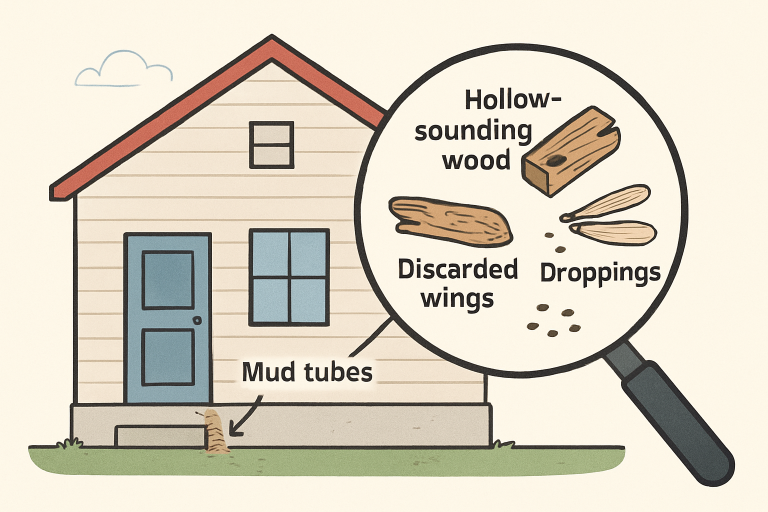Table of Contents
- Common Signs of Termite Infestation
- Why Termites Target Homes
- Effective Prevention Strategies
- Importance of Regular Inspections
- Professional Treatment Options
- Conclusion
Termites are among the most destructive pests facing homeowners, often causing significant damage long before they are detected. Recognizing early warning signs and taking swift preventive action can make all the difference in protecting your most important investment. Professional termite management services provide advanced solutions, but knowledge and vigilance remain vital first lines of defense for every property owner.
Learning to spot termite activity—combined with a clear understanding of what draws these wood-destroying insects to your home—empowers you to act before costly repairs become inevitable. While DIY methods exist, proven approaches focus on eliminating risk factors and integrating professional help when necessary.
Beyond traditional treatments, many homeowners are turning to sustainable options and seeking better ways to prevent or control infestations. Exploring eco-friendly pest control methods for environmentally conscious solutions can provide additional peace of mind while safeguarding your property and health.
Safeguarding your home against termites preserves structural integrity and helps maintain property value and comfort. Strategic prevention, regular inspections, and targeted treatments form a comprehensive defense plan. Understanding the signs and taking timely action is essential for every homeowner.
Common Signs of Termite Infestation
Early detection dramatically reduces the damage and expense associated with termites. Be alert for these telltale signs of an infestation:
- Mud Tubes: Thin, earthy tunnels along foundation walls or inside crawlspaces often signal active termites. These tubes protect workers as they forage for food.
- Hollow-Sounding Wood: Tap wooden surfaces; if they sound hollow or papery, termites may have hollowed them from the inside out.
- Discarded Wings: Look for small piles of wings near windows, doors, or light sources. Swarming termites shed their wings after finding a place to colonize.
- Frass: Drywood termites leave piles of pellet-like droppings resembling sawdust or coffee grounds, indicating active feeding.
- Warped Doors and Windows: Doors or window frames that suddenly become hard to open could be swelling due to termite damage or the tunnels they create within the wood.

Why Termites Target Homes
Understanding why termites are drawn to specific properties helps in creating effective prevention strategies:
- Moisture: Termites thrive in damp environments. Leaking pipes, clogged gutters, or pooled water near foundations provide the perfect habitat for these pests.
- Wood-to-Soil Contact: Wooden elements like deck posts, fence boards, or siding that touch the ground offer termites direct and easy access to your home’s structure.
- Cracks and Gaps: Even tiny cracks in foundations, brickwork, or around plumbing penetrations serve as easy entry points for termite colonies searching for food.
Homes that address these vulnerabilities are less likely to become termite targets, as dry and well-maintained properties are less hospitable for colony development. For additional background on how pests impact homes nationwide, see the U.S. Environmental Protection Agency (EPA) information.
Effective Prevention Strategies
Proactively reducing risk factors can save you thousands of dollars in termite repairs. Employ these evidence-backed prevention tips:
- Eliminate Moisture: Quickly repair leaky pipes, fix roof leaks, and ensure water flows away from your home with proper grading and functioning downspouts.
- Maintain Distance: Keep firewood, lumber, and mulch at least 20 feet from your home and off the ground to reduce hidden feeding opportunities.
- Seal Entry Points: Use high-quality caulk or sealant to close gaps, cracks, and holes in your home’s foundation and walls.
- Regular Landscaping: Prune shrubbery and tree branches away from your house to allow sunlight and promote airflow, reducing dampness and hiding places for termites.
Combining these steps creates a less attractive and accessible environment for termites, strengthening your overall protection and lowering the risk of infestation. For extensive best practices in home pest prevention, consult The New York Times resources.
Importance of Regular Inspections
Annual termite inspections from licensed pest professionals help identify problems early—often before visual structural damage appears. Experts use specialized tools and techniques, such as moisture meters and thermal imaging, to find hidden signs of activity. Infestations can go unnoticed for years without routine inspections, leading to expensive repairs and potential structural hazards.
Professional Treatment Options
If termites are discovered, immediate action is critical. Professional solutions include:
- Liquid Termiticides: These products are applied in the soil around your foundation, creating a chemical barrier to kill invading termites on contact.
- Baiting Systems: Bait stations in the perimeter attract termites, carrying the slow-acting poison back to the colony, effectively eliminating the problem at the source.
- Fumigation: For advanced or structural infestations, whole-structure fumigation fills the house with a targeted gas, eradicating all active termites inside.
Consulting with pest management professionals ensures you receive a treatment tailored to the severity and type of infestation, keeping your home safe for years to come.
Conclusion
Termites represent a persistent threat to homes nationwide, but with proactive awareness and robust prevention, homeowners can minimize risk and damage. Early detection, understanding what attracts termites, and consistently applying protective strategies are essential. Never underestimate the importance of professional inspections and responsive treatments; these can mean the difference between minor and major renovations. By staying vigilant, you help protect your home’s value and comfort for the long term.


